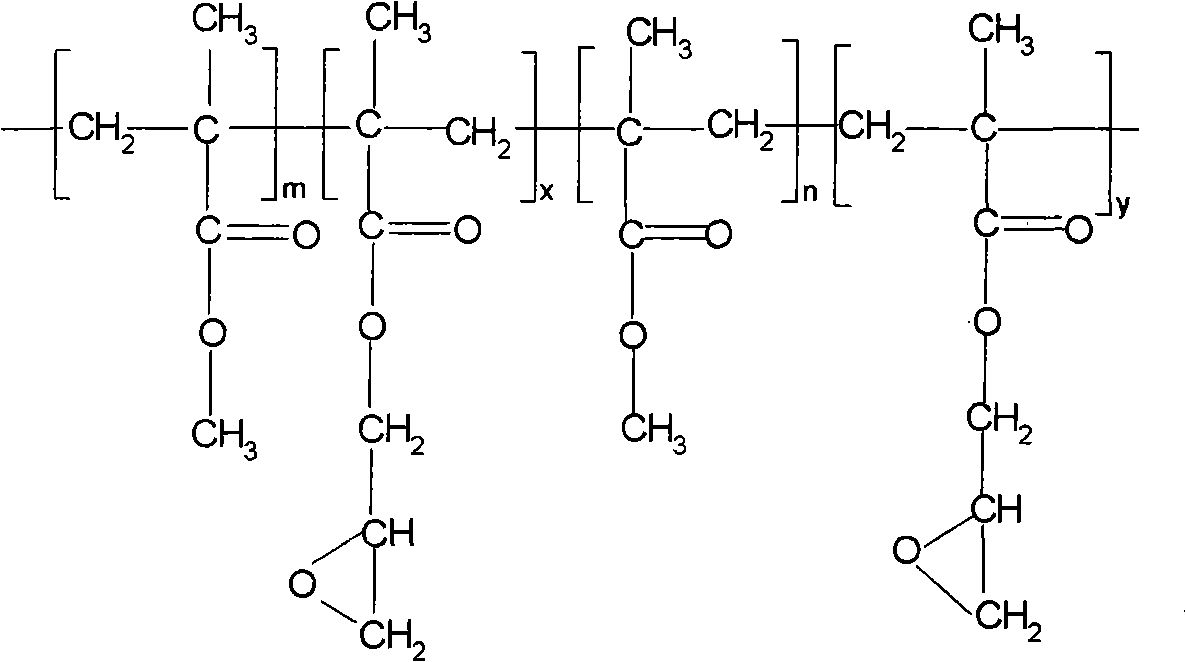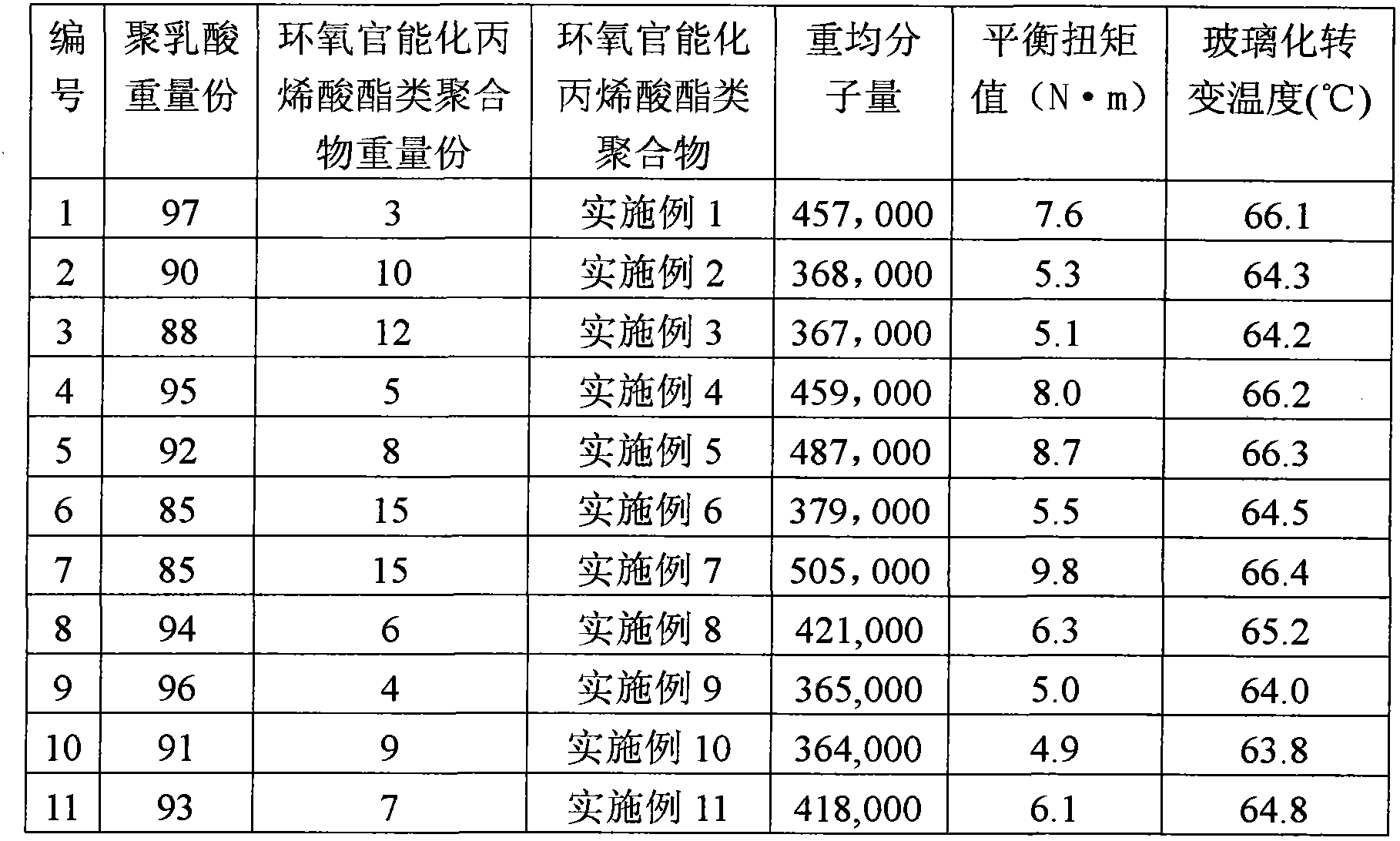Application of epoxy functionalized acrylic ester polymer
An acrylate and epoxy-functional technology, which is applied in the application field of epoxy-functionalized acrylate polymers, can solve the problems of high hazard, difficulty in obtaining, and long preparation route, and achieve low toxicity and increased compatibility , the effect of increasing the molecular weight
- Summary
- Abstract
- Description
- Claims
- Application Information
AI Technical Summary
Problems solved by technology
Method used
Image
Examples
Embodiment 1
[0046] 1) Preparation of an epoxy-functionalized acrylate polymer:
[0047] components
parts by weight
30
64.4
5.6
Di-tert-butyl peroxide
0.16
n-Dodecyl Mercaptan
0.04
[0048] Batch polymerization: According to the formula, mix the raw material components evenly, mix 900 grams of toluene, 2032 grams of methyl methacrylate, 168 grams of glycidyl methacrylate, 4.8 grams of di-tert-butyl peroxide, n-dodecyl sulfide 1.2 grams of alcohol, mixed evenly and added to a 5-liter reactor, using a Milton Roy model feeding pump to add to the reactor, stirring at a stirring speed of 160r / min, using nitrogen or other inert gases to fully replace the air in the reactor , using an oil bath to heat up the temperature, the oil bath temperature is constant at 120 ° C, and after the reaction is carried out for 3 hours from the oil bath temperature rise, the mixed mater...
Embodiment 2
[0052] 1) Preparation of an epoxy-functionalized acrylate polymer:
[0053] components
parts by weight
10
88.2
1.8
Di-tert-butyl peroxide
0.04
n-Dodecyl Mercaptan
0.24
[0054] Polymerization method is with embodiment 1.
[0055] 2) Weigh 49.5g of polylactic acid and 5.5g of epoxy-functionalized acrylate polymer and melt blend them in a Haake torque rheometer. The reaction temperature is 180°C, the speed is 60r / min, and the mixing time is 10min. The measured weight-average molecular weight, equilibrium torque value, and glass transition temperature of the polylactic acid modified by chain extension are listed in Table 1.
Embodiment 3
[0057] 1) Preparation of an epoxy-functionalized acrylate polymer:
[0058] components
parts by weight
toluene
30
68.6
1.4
Di-tert-butyl peroxide
0.16
n-Dodecyl Mercaptan
0.04
[0059] Polymerization method is with embodiment 1.
[0060] 2) Weigh 48.4g of polylactic acid and 6.6g of epoxy-functionalized acrylate polymer and melt blend them in a Haake torque rheometer. The reaction temperature is 180°C, the speed is 60r / min, and the mixing time is 10min. The measured weight-average molecular weight, equilibrium torque value, and glass transition temperature of the polylactic acid modified by chain extension are listed in Table 1.
PUM
| Property | Measurement | Unit |
|---|---|---|
| Variable temperature | aaaaa | aaaaa |
| Glass transition temperature | aaaaa | aaaaa |
| Glass transition temperature | aaaaa | aaaaa |
Abstract
Description
Claims
Application Information
 Login to View More
Login to View More - Generate Ideas
- Intellectual Property
- Life Sciences
- Materials
- Tech Scout
- Unparalleled Data Quality
- Higher Quality Content
- 60% Fewer Hallucinations
Browse by: Latest US Patents, China's latest patents, Technical Efficacy Thesaurus, Application Domain, Technology Topic, Popular Technical Reports.
© 2025 PatSnap. All rights reserved.Legal|Privacy policy|Modern Slavery Act Transparency Statement|Sitemap|About US| Contact US: help@patsnap.com



